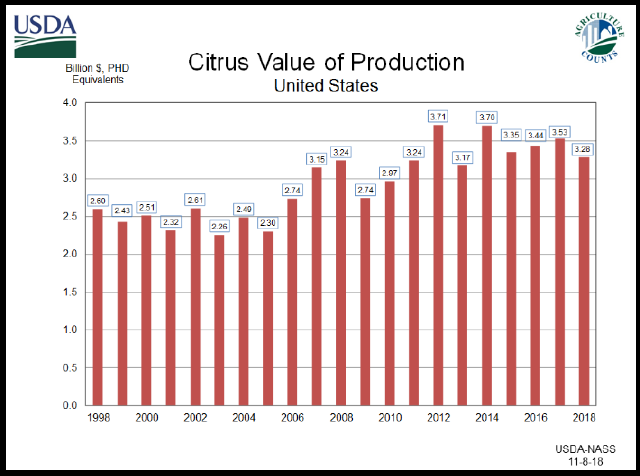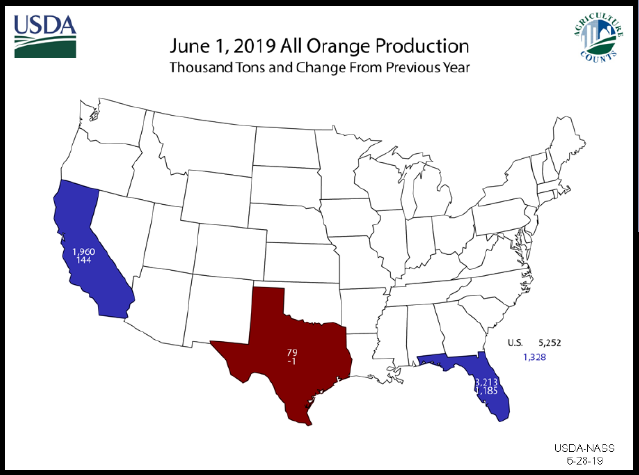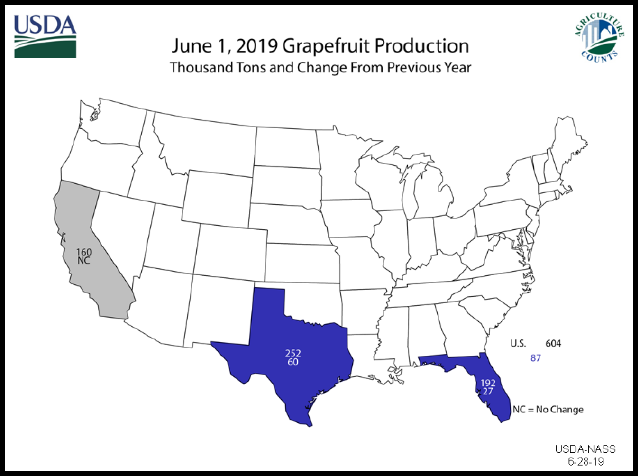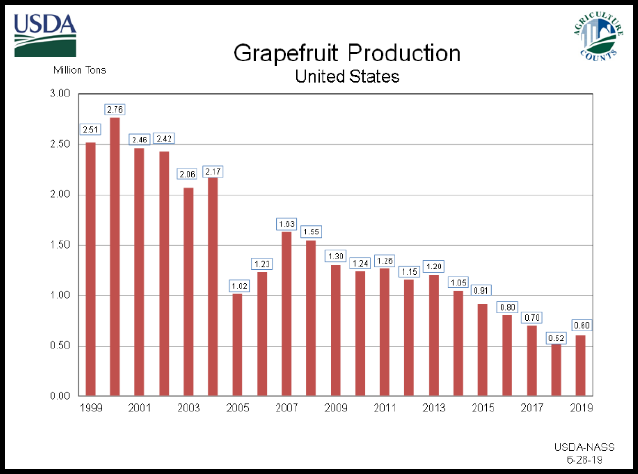- Data & Statistics
Access Quick Stats (searchable database)
The Quick Stats Database is the most comprehensive tool for accessing agricultural data published by NASS. It allows you to customize your query by commodity, location, or time period.
Access Quick Stats Lite
Quick Stats Lite provides a more structured approach to get commonly requested statistics from our online database.
Explore Statistics
County Level Information
Geospatial Data & Interactive Maps
- Publications
Browse NASS Reports
- by Subject
- by Date (Reports Calendar)
- by Title/Release Day
- by Keyword
- Guide to Products and Services
Additional Reports
Historical Publications
- Archived Ag Census Reports (2002 and prior - published every 5 years)
- Annual Agricultural Statistics
- Statistical Bulletins (final estimates, 1987 to 2012
- Track Records: (crops, livestock, grain stocks)
- Trends 20th century
- Price Reactions (after crop or livestock reports)
Receive Reports by Email:
- Newsroom
News Releases
04/24/25 USDA releases Census of Agriculture data results for American Samoa, Guam
04/08/25 USDA to Host Data Users’ Meeting on Statistical Programs
03/31/25 US farmers expect to plant more corn and less soybean acres
03/27/25 United States hog inventory down slightly
03/27/25 USDA releases Census of Agriculture data for the U.S. Virgin Islands
Read More News
ASB Notices
03/19/25 NASS reinstates select data collection programs and reports
02/26/25 NASS Delays Trout Production Data Release
01/02/25 NASS Delays Weekly Slaughter Release
09/25/24 NASS to publish 2023 Irrigation and Water Management report earlier
07/31/24 NASS to Review Acreage Data
Read More Notices
Videos
02/13/24 2022 Census of Agriculture Data Highlights
02/13/24 How to Find 2022 Census of Agriculture Data
02/13/24 2022 Census of Agriculture Data Release Event
07/16/21 What is a Farm?
08/05/20 The NASS Mission: We do it for you
View More Videos
ASB Briefings
04/17/25 National Hemp (April 2025)
04/10/25 Crop Production (April 2025)
03/31/25 Grain Stocks, Prospective Plantings, Rice Stocks (March 2025)
03/27/25 Quarterly Hogs and Pigs (March 2025)
03/11/25 Crop Production (March 2025)
View More Briefings
- Surveys
- Census
- About NASS
Structure and Organization
- Agency Overview
- NASS Biographies
- Organizational Chart
- Assistance to Other Organizations
- International Programs
- Talking About NASS - A guide for partners and stakeholders
- NASS Strategic Plan for FY 2022-2026
- USDA Strategic Goals
Guiding Principles
- Mission and Core Values
- Keeping Data Safe
- Confidentiality Pledge
- Security Pledge
- Security Statement
- Statement of Commitment to Scientific Integrity
- Regulations Guiding NASS
- Information Quality
- Learning Agenda, Fiscal Year 2024 -2026
Civil Rights
Work at NASS
Education and Outreach
- Understanding Ag Statistics
- Data Users' Meetings
- Morris Hansen Lecture
- International Conference on Agricultural Statistics
History and Procedures
- Agricultural Statistics Board and Lockup
- Agricultural Statistics: A Historical Timeline
- The Story of U.S. Agricultural Estimates
- As We Recall: The Growth of Agricultural Estimates, 1933-1961
-
Safeguarding America's Agricultural Statistics Report and Video
- History of Ag Statistics
- Report Procedures
- An Evolving Statistical Service
- Fact Finders for Agriculture
- Hall of Fame
- Contact Us
Mailing Address:
USDA-NASS
1400 Independence Ave., SW
Washington, DC 20250Survey FAQs and Contact Us:
Access FAQs or submit a question.
Data Inquiries:
Hours: 8:00 a.m. - 5:00 p.m. Central Standard Time
Monday - Friday, except federal holidays
Toll-Free: (800) 727-9540Media Inquiries:
Other USDA Inquiries:
Hours: Monday to Friday 8 a.m. - 5 p.m. EST
Toll-Free: (833) One-USDA
Email: askusda@usda.gov
Website: https://ask.usda.gov/s/Translation Services:
Regional and State Field Offices:
Find contact information for Regional and State Field Offices
Ask a Specialist:
Have a specific question for one of our subject experts? Contact a specialist.
Web Content Publishing Schedule:
Section 207(f)(2) of the E-Government Act of 2002 requires federal agencies to develop an inventory of information to be published on their Web sites, establish a schedule for publishing information, make those schedules available for public comment, and post the schedules and priorities on the Web site.
- Help
Technical Issues
Surveys
Fruits and Nuts

The Fruit and Nut surveys provide farmer and/or agri-business estimates and forecasts of crop acreage, yield, production, price, value of production, and disposition of the crop as a component of the process to estimate fruit and nut crop production levels, price, value, and disposition of the crop.
These surveys are conducted in the major production states for each respective commodity. States survey all known commercial producers of fruit and nut commodities when only a small number of growers exist. For some commodities where a large number of producers exist in a given state, the state will conduct a probability survey or contact a sample of the growers to get production data.
Respond Online
Click here to complete your survey online. Remember, you will need your unique survey code to sign in.
Get the data from the results of this survey.
Publications:
The Fruit and Nut surveys produce results used to publish forecasts in the Crop Production report. End of growing or marketing season surveys produce results used to publish the Noncitrus Fruits and Nuts reports in May, or the Annual Citrus report in September.
Access the data in Quick Stats database:
View and download data from the NASS Quick Stats database.
- Choose the detailed database (Quick Stats 2.0).
- In Quick Stats 2.0, under Program, select "Survey."
- Make additional category choices for the data you are looking for.
- Click to read about the Quick Stats Tools
Want to receive reports automatically? Click an option below to subscribe.
Data Visualizations:
Charts and Maps:
Program Content
Farm operators provide data for fruit and nut crops including apples, apricots, avocados, bananas, berries, cherries, cranberries, dates, figs, grapes, guavas, kiwifruit, nectarines, olives, papayas, peaches, pears, pineapples, plums, prunes, strawberries, grapefruit, lemons, oranges, tangelos, tangerines, temples, almonds, hazelnuts, macadamia nuts, pecans, pistachios, and walnuts being produced on the operation.
Bearing acres, yield per acre, total production, utilized production, price, and value of production are the types of information collected for each crop from the producers and/or processors. A measure of change can be obtained by comparing previous season reports to current season or comparing within season reports.
Uses
The Fruit and Nut surveys are a vital component of the estimation process for fruit and nut production estimates. The uses of the resulting publications are to provide critical information on acreage, yield, production, price, utilized production, total production, and value of production to the fruit and nut industry, growers, transportation companies, farm program analysis, and economic calculation.
Farm operators are the greatest benefactor of this data series. The estimates of production are the official, independent, and unbiased industry baseline. This kind of information is crucial in the price discovery process.
Crop production estimates are also valuable for producers and industry to plan the marketing and movement of the commodity throughout the year.
Frequency
The Fruit and Nut surveys vary in frequency by commodity. One or more forecast surveys are conducted during the growing season followed by an end of growing season survey and an end of marketing season survey for most fruit commodities. Some commodities only have an end of growing season and/or an end of marketing season survey. The timing of each survey is dependent on the growing and marketing season of that particular commodity.
Methods
The forecast reference date for each fruit and nut commodity is the first of the month that the forecast report is published. Mail data collection for forecasts is to begin no earlier than the 25th of the previous month. Phone data collection begins no earlier than the 28th of the previous month. Data collection concludes between the 5th and 8th of each month depending on the release date of the publication. End of season surveys are conducted shortly after the end of the growing or marketing season.
The primary methods of data collection are telephone interview and mail out/mail back data collection. Mail is emphasized as it is highly cost effective and less burdensome. However, in narrow data collection periods, the telephone is more effective. Personal interview data collection is used on a limited basis when coordination is needed across survey projects or when requested by the respondents.
Phone enumerators may use CATI software which allows the enumerator to verbally maintain a conversation with the respondent while following the instrument question text. Reported data are entered directly into an electronic format and the software performs simple consistency checks. In many cases the enumerator relays the question to the respondent from a paper questionnaire and records the response on the paper form. These forms are reviewed for consistency, then summarized.
Related Programs
Fruit Chemical Use
Last Modified: 04/17/2024


























